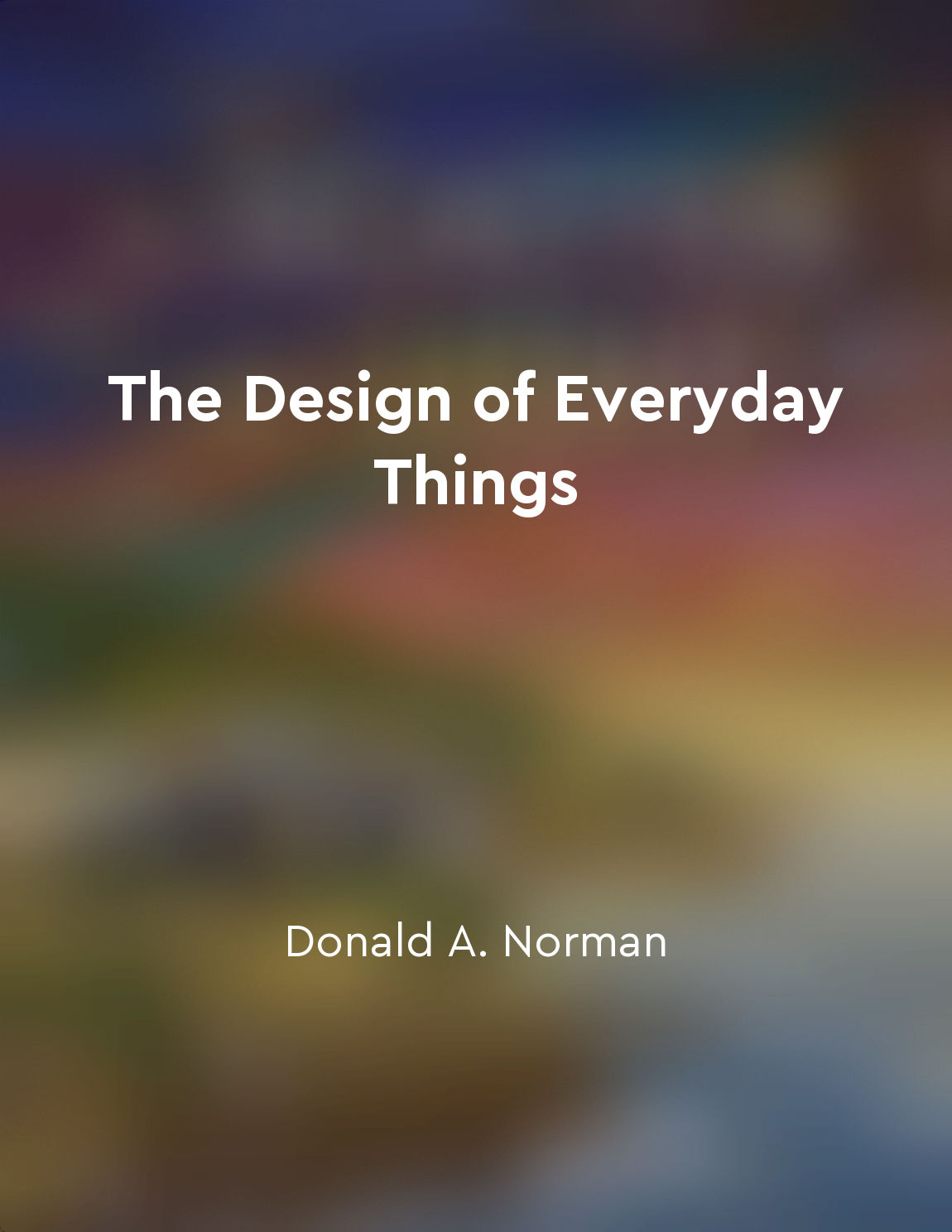Audio available in app
Affordances allow intuitive interaction from "summary" of Universal Principles of Design, Revised and Updated by William Lidwell,Kritina Holden,Jill Butler
Affordances are the qualities of an object that suggest how it can be used. They provide clues to users about how to interact with an object without the need for labels or instructions. By simply looking at an object, users can understand how it functions and how they can use it. This intuitive interaction is made possible by affordances. For example, a door with a handle affords pulling, while a door with a flat plate affords pushing. These visual cues guide users in their interactions with the door, making the process more intuitive. Affordances create a seamless connection between the user and the object, allowing for effortless interaction. In design, affordances play a crucial role in ensuring that users can easily understand how to use a product or interface. By designing objects with clear affordances, designers can enhance the user experience and reduce the need for instructions or explanations. Users can simply look at an object and know how to interact with it based on its affordances. By leveraging affordances, designers can create products that are intuitive and user-friendly. Users can quickly grasp how to use an object or interface, leading to a smoother and more enjoyable experience. Affordances help bridge the gap between the user's expectations and the object's functionality, resulting in a more intuitive interaction.- Affordances are a powerful design principle that allows for intuitive interaction between users and objects. By incorporating clear affordances into design, designers can create products that are easy to use and understand. This seamless connection between user and object enhances the overall user experience and leads to greater satisfaction.
Similar Posts
Designers should consider the environmental impact of their designs
Designers have a responsibility to think beyond aesthetics and functionality when creating new products and services. They must...

Consistency in design aids user learning
Consistency in design is crucial for aiding user learning. When elements in a design are consistent, users are able to quickly ...

Find ways to automate repetitive tasks
One of the most effective ways to simplify your life and work is to find ways to automate repetitive tasks. This means identify...
Use repetition to strengthen visual unity
Repetition is a key principle in design that can help to create visual unity. When elements are repeated throughout a design, t...
Incorporate round shapes for a sense of harmony
Round shapes have a unique ability to evoke a sense of harmony in our surroundings. Their smooth curves and soft edges create a...
User feedback guides iterative design enhancements
User feedback plays a crucial role in the iterative design process. It acts as a compass, guiding designers towards making enha...
Foster a culture of accountability
To truly escape the build trap, organizations must foster a culture of accountability. This means ensuring that everyone in the...
Finite state machines model system behavior
Finite state machines provide a simple yet powerful way to model system behavior. By defining a set of states and transitions b...
Emotional resonance builds brand loyalty
The emotional connection that we form with a brand is what ultimately determines our loyalty towards it. This emotional resonan...
The design of the exhibit should facilitate learning
To ensure maximum educational impact, the design of an exhibit must be carefully crafted to facilitate learning. This involves ...

